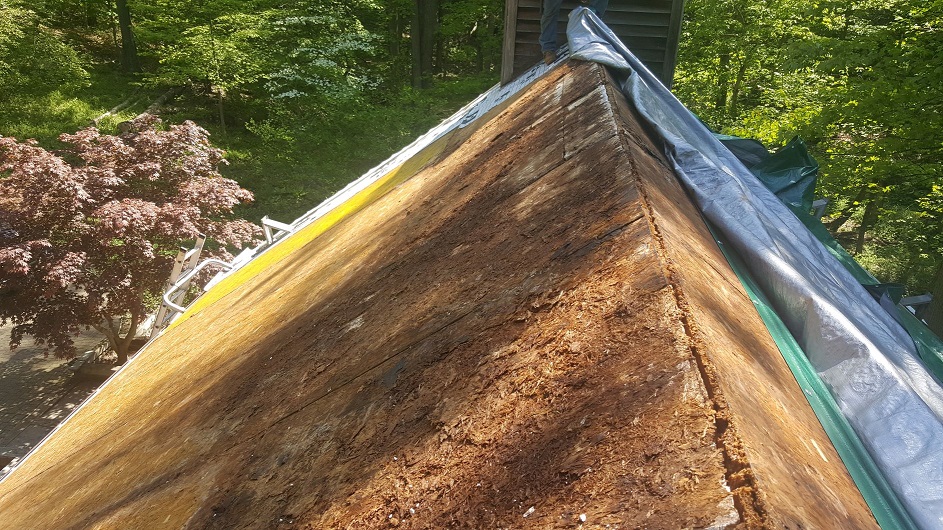The SIP industry has some wonderful stories to tell and a long history of successes. However, like all industries, we have some weaknesses as well.
There are a lot of “pros” for the ubiquitous OSB skinned SIP, but one of the “cons” is the fact that OSB is made of wood. When wood remains wet for a long time, the deterioration of the wood is inevitable. This fact combines with two other facts that are rooted in the laws of physics. The nature of high performance buildings is to make them air-tight. It is well known that air infiltration and exfiltration rob you of peak energy efficiency. Hence, the details of high performance buildings (including SIPS) involves sealing the joints to prevent air movement in and out of the structure.
When a SIP package is installed by someone unfamiliar with high performance, the details of sealing can fall below the minimum standard. This lack of training or attention to detail can allow air movement through the joints of the assembly. When this air moves it takes with it some amount of moisture that would be defined by relative humidity. The first of the two facts is about to bite. When warm moist air comes in contact with a cold surface, the result is condensate resulting from having reached the “dew point”. The amount of water (condensate) that is formed is a function of 3 things; how much moisture is in the air (relative humidity), what is the differential temperature between the warm air and the cold surface, and how much air leaks through the joint. It’s this last item that is influenced by our second fact and one that exacerbates a leaky ridge. Warm air rises and warm air holds more moisture. This buoyant air moves up just as smoke rises in a smoke stack. This analogy should help you understand why this phenomenon is referred to as the “Stack Effect”. Yes, even houses can be influenced by the Stack Effect. If your home is heated and it’s in the winter months, the warmest and wettest air will accumulate at the highest location which just happens to be near or at the ridge of your roof. This stack effect actually creates a high pressure situation near the ridge and a low pressure situation at the lowest point of the conditioned space. Now these pressure highs and lows are very slight but they will do two things. They will force air out of the structure at the top and draw air into the structure at the bottom at any location that allows air to leak through the assembly. Remember that you need two things to have a leak in your building’s envelope. You need a hole and you need a differential in pressure (Delta P).
At this point you should see all the pieces of the puzzle aligning for the creation of ridge rot. The installer left a hole. The house is being heated. The interior air has moisture defined by the indoor relative humidity. It’s cold outside. The stack effect creates a differential pressure. BAAAMMM. Warm moist air leaks through the ridge and a dew point is reached causing condensate to accumulate in your roof assembly. You may think it’s game over and time for a roof repair. However, I encourage you to remember this very important additional fact that I’ll offer.
You don’t have a moisture problem unless the rate of wetting exceeds the rate of drying.
Read that again because it’s that important. I wish more building professionals embraced and understood this truism. The term ridge rot is used when the rate of wetting has exceeded the rate at which the OSB skin can dry. The OSB used in the SIP industry is referred to as “Exposure 1 rated”. In simple terms, this higher performance specification means it can get wet and then dry without degrading its performance. However, if that rate of wetting is increased, we can exceed the OSB’s ability to handle continuous and repeated periods of wetting resulting in the dreaded ridge rot.
What might increase the rate of wetting? Here’s a short list:
- Colder climates
- Higher indoor levels of humidity
- Bigger holes in your assembly or panel joints
What might increase the rate of drying? Here’s a short list:
- Warmer climates
- Drier climates
- More wind
- More sun
- Less shade
- Cladding details that allow back ventilation of cladding (Also referred to as a “Rain Screen”)
One of my many training mantras is to emphasize the importance of drying. I know that as a designer and builder of high performance structures, it is most important to think about how moisture gets out (drying). If all we do is detail ways to prevent moisture from getting in, we’re forgetting the law of Murphy. This law ensures that somewhere, somehow, moisture will find its way into your assembly. And, when that happens, you can prepare for it in two ways.
- Design and build with an emphasis of promoting your buildings capacity to dry.
- Build your house in a desert.
Ridge rot is a term that the SIP industry would love to see disappear from our lexicon. Through training and basic understanding of the relationship between wetting and drying, we can easily prevent this problem.
